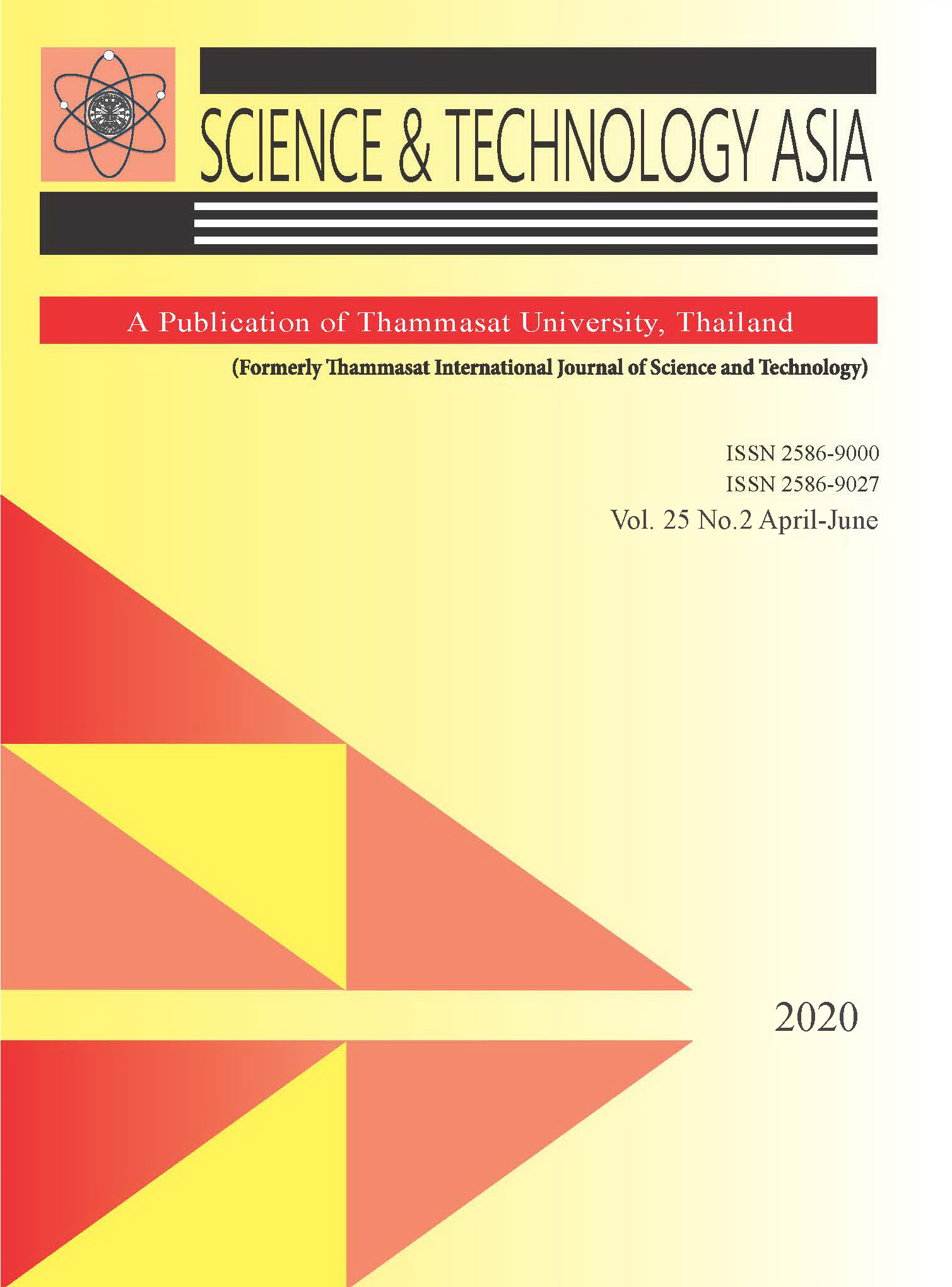An Application of a Cumulative-Sum Control Chart for Elderly Fall Detection using Smartphone Accelerometers
Main Article Content
Abstract
The objective of this work is to apply a cusum control chart to detect elderly falls using accelerometers in a smartphone. A violent fall, for example, is that the subject is unconscious due to acute stroke. If the subject is helped in time, he/she can be remedied and gotten back to normal. The cusum control chart is selected because it is a simple tool for calculation which saves resources and provides a fast response. The smartphone including accelerometer sensors is appropriate for this work because it is comfortably and widely used and the cost is affordable. The smartphone is attached at the chest level. For each volunteer, the smartphone records the signals of the five falls (collapsed fall, front fall, left fall, right fall, and back fall) and eight activities of daily life (walking, running, jumping, bending down, kneeling, sitting on the floor, sitting on a chair, and lying down). There are 40 volunteers (10 normal weight volunteers of each gender and 10 overweight volunteers of each gender) less than 50 years old, who performed as elderly people using the elderly simulation kit. Two replications of each activity are done by each volunteer. The first is for threshold development for detection and the second is for verification. Using the cusum, any fall is detected when the values of the magnitude of the positive shift and the nonzero period are more than their own threshold values developed for each target group. The overall sensitivity and the specificity are 96.00% and 93.44%, respectively.


